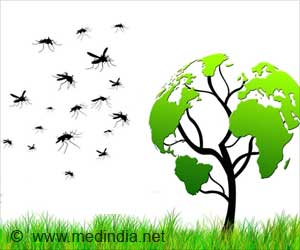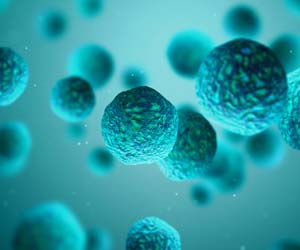Gene therapy and biotechnology can tackle environmental issues such as deforestation and air pollution. Genetic modification in mosquitoes can reduce the risk of epidemic diseases such as dengue and malaria.

‘Gene therapy and biotechnology can solve environmental issues such as deforestation and air pollution. Genetic modification in mosquitoes can prevent the risk of epidemic diseases such as dengue and malaria.’





Biotechnology can help in finding out the level of Particulate Matter 2.5 in the air, which is a burning issue in big cities around the world, he said. "I worked in collaboration with another scientist, to make a filterless air purifier that will clean the air and destroy PM 2.5 which is found indoors as well. In 2005 when we started, we were targeting MRSA (methicillin-resistant Staphylococcus aureus) bacteria. We used AHPCO Cell (Advanced Hydrated Photocatalytic Oxidation Cell), and we could actually measure the saturation of PM 2.5 using our machine," said Ghosh.
Researches are being conducted to find out the genetic effect of PM 2.5.
"Initially we thought this only caused pulmonary diseases, but it is entering our whole body. When PM 2.5 crosses the cut-off line, patients die due to heart attacks and other problems like digestion and infection also aggravate," he added.
"Researchers are trying to identify the effect on the gene due to pollution. We are doing the medication of the diseases without knowing the exact genetic effect of pollution causing a particular disease," said city-based doctor P.K. Banerjee.
Advertisement
The city's real-time Air Quality Index recorded in the last 48 hours revealed PM 2.5 level at 154, which is termed as unhealthy for the body. The safe levels of PM2.5 and PM10 are 60 and 100 microgramme/m3 respectively, and anything beyond is considered hazardous for the respiratory system.
"The scientists inserted this bacterium in the male mosquitoes which do not bite. When these males mate with wild females, which do not carry the same strain of Wolbachia, the resulting fertilized eggs don't hatch because the paternal chromosomes do not form properly," he said.
An alumnus of Hare School and Calcutta University, Ghosh, who has worked along with Department of Non-conventional Energy Sources (DNES) on the application of tissue culture technology in crop development, said it could tackle deforestation.
"We are planting trees like Dalbergia sissoo, Ashoka tree, Albizia lebbeck, Albizia lebbeck and other fast-growing legumes, growing them quickly using gamma radiation and tissue culture," he said.
Ghosh is also working on an ongoing project in collaboration with Indian scientists trying to analyze the percentage of carbon, nitrogen, and sulphur in Triphala and identifying the particular chemical responsible for reducing cancer.
"Currently I am also working in collaboration with other scientists on Bitter gourd (Momordica charantia). We have analyzed and found that the biochemical of the plant can reduce blood sugar," he said.
Bitter gourd can act as a preventive against diabetes and Triphala against cancer.
Source-IANS











